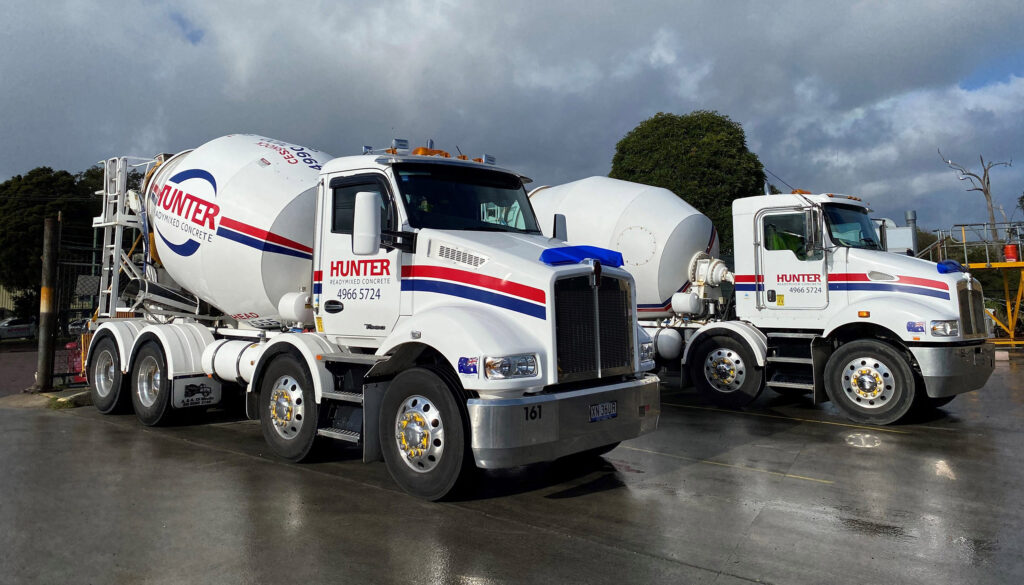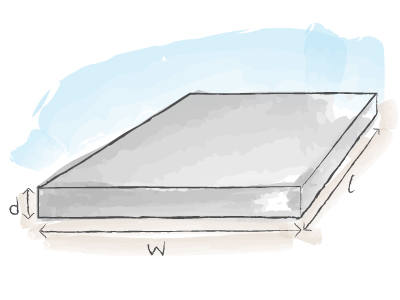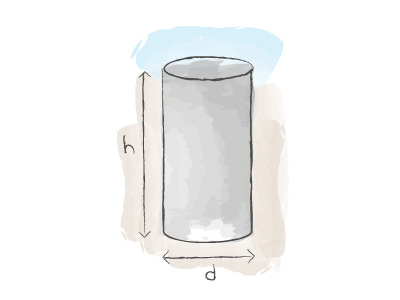Is The Site Accessible?
Will a standard concrete truck be able to get access to where the concrete is to be placed? If you are in doubt, check with your supplier. If a fully-laden concrete truck is to be driven onto the property, will it cause damage to items such as driveways, paths, patios and services in the ground such as stormwater and sewer pipes? If so, will a smaller truck such as a mini-mix truck avoid the problem, or will it be better to pump the concrete from the street?
How Will The Concrete Be Placed?
When ordering the concrete, the concrete supplier must be told how the concrete will be placed so that the correct concrete mix can be supplied.
The simplest method of placing concrete is to be able to discharge the concrete directly into its final position from the concrete truck, ie placement by chute.
If wheelbarrows will be used to transport the concrete from the truck to its final position, remember that 1 m3 of concrete = 1000 litres and weighs about 2400 kg. Using a conventional 50-litre-capacity wheelbarrow will take 20 trips and each wheelbarrow load will weigh about 120 kg. To make transporting the concrete easier, it is recommended to only half fill each wheelbarrow, even though it will double the number of trips.
Also, remember that the concrete supplier has a certain time to empty the truck. If emptying the concrete truck using wheelbarrows, check with the supplier at the time of ordering so you can plan (number of wheelbarrows and people required) to empty the truck in the time available.
Problems with access to the site may be overcome by using a concrete pump. This will require a specially designed concrete mix that will pass through the pump and pipeline properly.
How To Order Premixed Concrete
The premixed concrete supplier will need to know the following:
- Who is ordering the concrete. This is generally the person paying for the concrete.
- Where is the concrete required. The street address of the project and any other details to make it easier for the concrete truck driver to find your place and project.
- When. The date and time that the concrete is required. Make sure that this allows enough time to finish preparing the work and have everything ready to receive the concrete. If more than one truck load of concrete is needed, the premixed concrete supplier must know how long is required between deliveries. Also, check how long the trucks have at the site to discharge the concrete. This may be important if placing by slower methods such as wheelbarrow.
- Quantity. The amount or volume in cubic metres of concrete required for the project (see Assessing Concrete Volumes). As a general rule for small projects, 10% extra concrete should be allowed for wastage when estimating the volume required. This allows for small errors in estimating and/or allows for concrete left in the hopper of a concrete pump.
Concrete volumes should be carefully estimated from on-site measurements and not from drawings or plans. Variations in the slab thickness, deflection or movement of forms, over excavation, uneven or irregular ground levels, placement on uncompacted sand or fill and use for other minor items are all things that can not be assessed from drawings or plans.
Concrete can be ordered in multiples of 0.1 m3, so when ordering the concrete the estimated quantity should be rounded up to the next 0.1 m3. For example, if it is estimated from measurement that 2.85 m3 is required for a garage floor slab, add an allowance for wastage (say 10% or 0.28 m3) giving a total of 3.13 m3, round up to the nearest 0.1 m3 and order 3.2 m3 Remember when ordering concrete, it is far more economical to order a little extra than to have to order a small additional quantity to finish the job.
- Class of Concrete. Normal-class concrete is the appropriate class for DIY domestic projects. This means that the premixed concrete supplier generally needs to know only the strength of the concrete and method of placement. While the slump and maximum nominal aggregate size can also be selected, default values will be used if this information is not part of the order.
- Strength grade. Premixed concrete is supplied in standard strength grades of N20, N25, N32, N40 and N50. For most domestic projects, including floor slabs, paths and sheds, a normal-class concrete having a strength grade of 20 is the minimum that should be used. This is ordered as an N20 concrete. Grade 25 (N25) is preferable for driveways, heavily trafficked paths and patios.
- Slump. Slump is a measurement of the workability of the concrete. For example, concrete with a 100-mm slump is easily workable while concrete with a 40-mm slump is fairly stiff and much harder to work. For most work around
the home, order a 100-mm slump concrete. Do not order 80-mm slump and add water on site to achieve higher slump. Beware of Excess Water.
- Maximum nominal aggregate size. This is the size of the largest stones used in the concrete mix. 20-mm is the most common size and suitable for most applications.
- Method of placement. This is most important as it allows the supplier to choose the correct mix design for your project. Some of the choices that can be made include direct from the truck (chute), by pump or by wheelbarrow.
- Payment. Agree the method of payment.
- On delivery. Check the delivery docket to confirm the details of the order before commencing placement.
Working Safely With Concrete
When handling and using wet concrete, avoid contact with the skin and wear suitable protective clothing.


